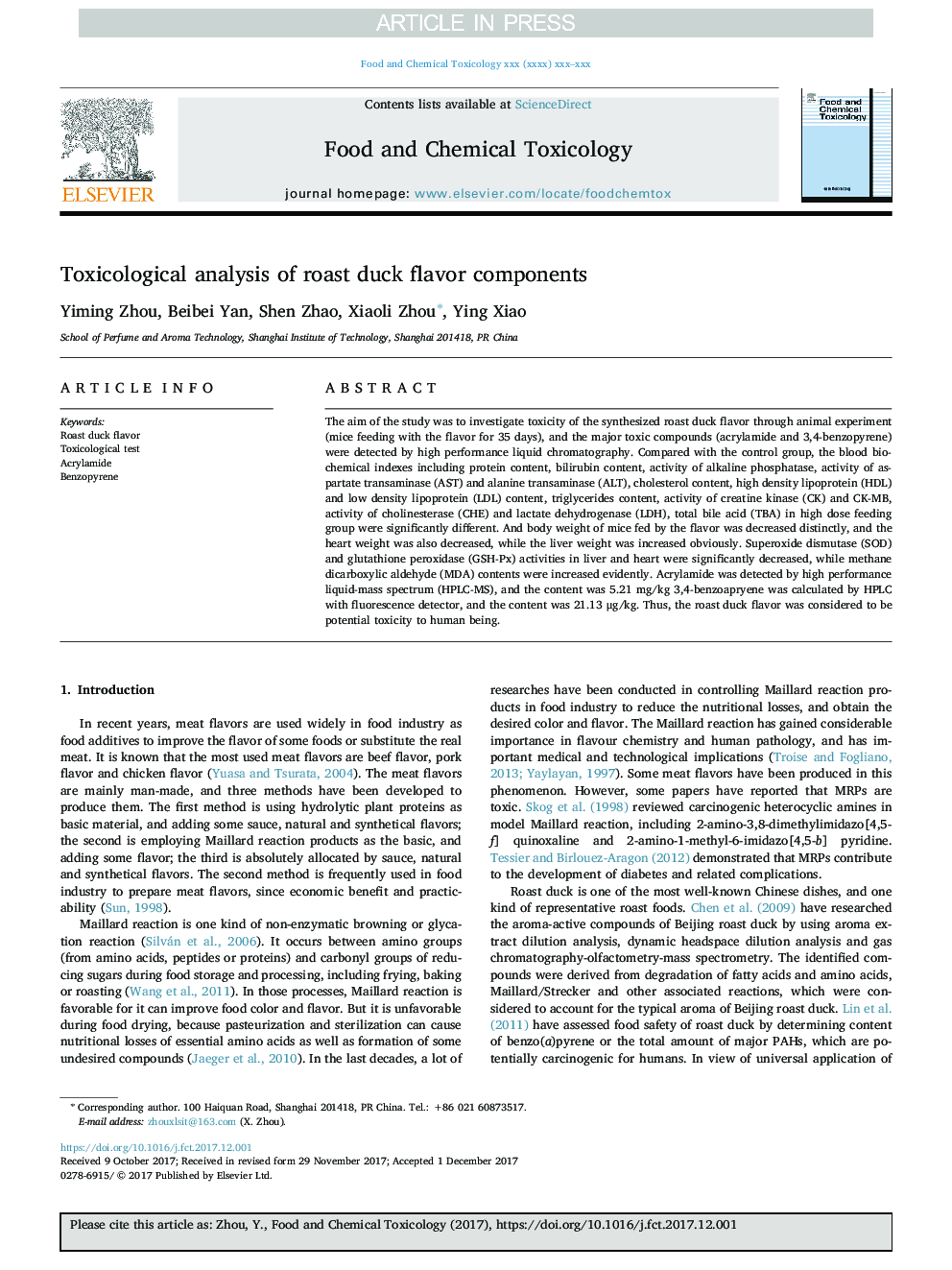| کد مقاله | کد نشریه | سال انتشار | مقاله انگلیسی | نسخه تمام متن |
|---|---|---|---|---|
| 8546971 | 1561726 | 2018 | 7 صفحه PDF | دانلود رایگان |
عنوان انگلیسی مقاله ISI
Toxicological analysis of roast duck flavor components
ترجمه فارسی عنوان
تجزیه و تحلیل سم شناسی اجزای عطر و طعم اردک کبابی
دانلود مقاله + سفارش ترجمه
دانلود مقاله ISI انگلیسی
رایگان برای ایرانیان
کلمات کلیدی
طعم اردک کبابی، آزمون سمی، آکریلامید، بنزوپیرن،
موضوعات مرتبط
علوم زیستی و بیوفناوری
علوم کشاورزی و بیولوژیک
دانش تغذیه
چکیده انگلیسی
The aim of the study was to investigate toxicity of the synthesized roast duck flavor through animal experiment (mice feeding with the flavor for 35 days), and the major toxic compounds (acrylamide and 3,4-benzopyrene) were detected by high performance liquid chromatography. Compared with the control group, the blood biochemical indexes including protein content, bilirubin content, activity of alkaline phosphatase, activity of aspartate transaminase (AST) and alanine transaminase (ALT), cholesterol content, high density lipoprotein (HDL) and low density lipoprotein (LDL) content, triglycerides content, activity of creatine kinase (CK) and CK-MB, activity of cholinesterase (CHE) and lactate dehydrogenase (LDH), total bile acid (TBA) in high dose feeding group were significantly different. And body weight of mice fed by the flavor was decreased distinctly, and the heart weight was also decreased, while the liver weight was increased obviously. Superoxide dismutase (SOD) and glutathione peroxidase (GSH-Px) activities in liver and heart were significantly decreased, while methane dicarboxylic aldehyde (MDA) contents were increased evidently. Acrylamide was detected by high performance liquid-mass spectrum (HPLC-MS), and the content was 5.21 mg/kg 3,4-benzoapryene was calculated by HPLC with fluorescence detector, and the content was 21.13 μg/kg. Thus, the roast duck flavor was considered to be potential toxicity to human being.
ناشر
Database: Elsevier - ScienceDirect (ساینس دایرکت)
Journal: Food and Chemical Toxicology - Volume 119, September 2018, Pages 438-444
Journal: Food and Chemical Toxicology - Volume 119, September 2018, Pages 438-444
نویسندگان
Yiming Zhou, Beibei Yan, Shen Zhao, Xiaoli Zhou, Ying Xiao,
